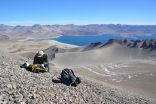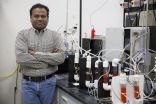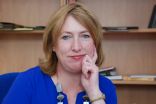New guide to the genetic jungle of muscles can help health research
Researchers from Aarhus University and Bispebjerg Hospital have created a comprehensive overview of how tens of thousands of genes interact in relation to the behavior of muscles. At the same time, they have developed a guide to the huge amounts of data.
2014-11-26
(Press-News.org) How do the genes in the cells inside the body's muscles respond when the muscles are put to work? And how are these genes affected when muscles are not used? What importance do activity and, on the other hand, lack of activity have for the organism's metabolism, and thus also for diseases such as diabetes and obesity?
These questions form the basis for a new study from the Department of Public Health at Aarhus University and the Institute of Sports Medicine at Bispebjerg Hospital. For the first time, the study compares the reactions of all genes in the muscles to diverse muscular work on the one hand, and a lack of activity on the other. This has been achieved partly by means of taking muscle tissue samples from twenty young, healthy male test subjects, and partly by means of genetic screening.
The results have just been published in the Nature journal Scientific Data and represent an enormous volume of data which is now available to researchers all over the world.
Platform for future research
"Genetic screening faces a major challenge in that tens of thousands of genes multiplied by a given number of test subjects involved and by a given number of points in time selected for measurement, quickly develops into hundreds of thousands of data points that you have to be able to comprehend and interpret," says Associate Professor Kristian Vissing from Aarhus University.
Even though you can systematise data, this type of bioinformatic analysis also has limitations. For instance, reported data most often rely on highest ranking of response. While this may serve to highlight genes that are highly responsive, it is not necessarily telling of their biological importance. Oppositely, potentially important genes responding below a pre-set cut-off level are easily ignored, but may be just as important or even more important to our understanding of a biological mechanism that is at the root of a disease.
"As part of the study we have therefore developed a search tool, or manual, which makes it easy for other researchers to find their way around the large volumes of data and obtain knowledge about the genes they are particularly interested in," says Kristian Vissing.
Together the two elements of the study provide a platform for further research into disease and treatment options. For example for examining muscle genes that are involved in the carbohydrate metabolism, which may help to direct the development of medicine to help against diabetes.
INFORMATION:
ELSE PRESS RELEASES FROM THIS DATE:
2014-11-26
Boulder, Colorado, USA - The Laguna del Maule Volcanic Field, Chile, includes a record of unusually large and recent concentration of silicic eruptions. Since 2007, the crust there has been inflating at an astonishing rate of 25 centimeters per year. This unique opportunity to investigate the dynamics of a large rhyolitic system while magma migration, reservoir growth, and crustal deformation are actively under way is stimulating a new international collaboration.
Explosive eruptions of large-volume rhyolitic magma systems are common in the geologic record and pose a ...
2014-11-26
GAINESVILLE, Fla. --- Buck Rogers surely couldn't have seen this one coming, but at NASA's request, University of Florida researchers have figured out how to turn human waste -- yes, that kind -- into rocket fuel.
Adolescent jokes aside, the process finally makes useful something that until now has been collected to burn up on re-entry. What's more, like so many other things developed for the space program, the process could well turn up on Earth, said Pratap Pullammanappallil, a UF associate professor of agricultural and biological engineering.
"It could be used on ...
2014-11-26
DESPITE a sequence of stellar performances by Britain's female athletes and team game players, coverage of women's sport in the Press still occupies a fraction of the space given to men, according to University of Huddersfield lecturer Deirdre O'Neill, who has analysed thousands of articles in newspapers that she describes as a "football-saturated boyzone".
One side effect of this marginalisation of women's sport is that girls - with fewer role models to admire - are much less likely to take part themselves. They leave school half as active as young men, leading to potential ...
2014-11-26
Bioengineers at the University of California, San Diego have discovered that mouse embryos are contemplating their cellular fates in the earliest stages after fertilization when the embryo has only two to four cells, a discovery that could upend the scientific consensus about when embryonic cells begin differentiating into cell types. Their research, which used single-cell RNA sequencing to look at every gene in the mouse genome, was published recently in the journal Genome Research. In addition, this group published a paper on analysis of "time-course"single-cell data ...
2014-11-26
Latest research on the oldest surviving rock art of Southeast Asia shows that the region's first people, hunter-gatherers who arrived over 50,000 years ago, brought with them a rich art practice.
Published this week in the archaeological journal Antiquity, the research shows that these earliest people skilfully produced paintings of animals in rock shelters from southwest China to Indonesia. Besides these countries, early sites were also recorded in Thailand, Cambodia and Malaysia.
Griffith University Chair in Rock Art Professor Paul Taçon led the research which ...
2014-11-26
A Brigham and Women's Hospital-led team has identified a long sought-after partner for a key immune protein, called TIM-3, that helps explain its two-faced role in the immune system -- sometimes dampening it, other times stimulating it. This newly identified partner not only sheds light on the inner workings of the immune system in diseases such as HIV, autoimmunity, and cancer, but also provides a critical path toward the development of novel treatments that target TIM-3. The researcher's findings appeared last month in the journal Nature.
"There has been a lot of confusion ...
2014-11-26
Conservationists are always looking for ways to halt the pace of deforestation in tropical rainforests. One approach involves recultivating abandoned agricultural land. An international team* investigating this concept has just published its findings in Nature Communications. Working in the mountainous regions of Ecuador, the researchers found afforestation and intense pasturing to be particularly effective, clearly increasing the environmental and economic value of abandoned farmlands.
Every year, 130,000 square kilometers of rainforest disappear from the face of the ...
2014-11-26
This news release is available in German.
A drunken sailor staggers onto a square with lots of streetlamps on it. Sometimes he will run into one of the lamps, change his direction and keep moving. Does the time he spends on this square depend on the number of streetlamps? The surprising answer is: no.
No matter whether there is a streetlamp on every square meter or whether the distance between the lamps is large: on average, the drunken sailor will always spend the same amount of time on the square. Calculations at the Vienna University of Technology (TU Wien) ...
2014-11-26
Neither quantum computers nor quantum cryptography will become prevalent technologies without memory systems able to manipulate quantum information easily and effectively. The Faculty of Physics at the University of Warsaw has recently made inroads into popularizing quantum information technologies by creating an atomic memory with outstanding parameters and an extremely simple construction.
Following years of tests in physics laboratories, the first quantum technologies are slowly emerging into wider applications. One example is quantum cryptography - an encryption ...
2014-11-26
The ocean is undergoing global changes at a remarkable pace and we must change with it to attain our best possible future ocean, warns the head of The University of Western Australia's Oceans Institute.
One of the global leaders in ocean science, Professor Carlos Duarte has shared his insights on the future of the world's oceans in a paper published in the international open-access journal Frontiers in Marine Science.
In the paper Professor Duarte explains the grand challenge researchers face in addressing global change and the future state of the ocean.
"The ocean ...
LAST 30 PRESS RELEASES:
[Press-News.org] New guide to the genetic jungle of muscles can help health research
Researchers from Aarhus University and Bispebjerg Hospital have created a comprehensive overview of how tens of thousands of genes interact in relation to the behavior of muscles. At the same time, they have developed a guide to the huge amounts of data.






